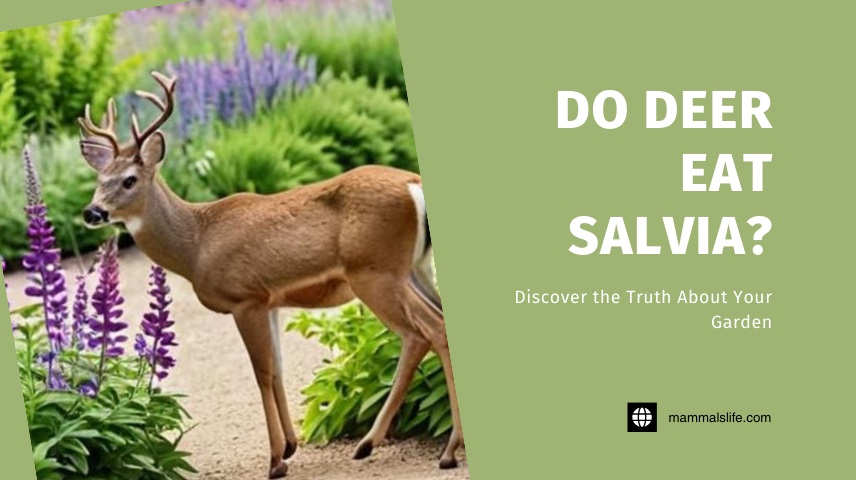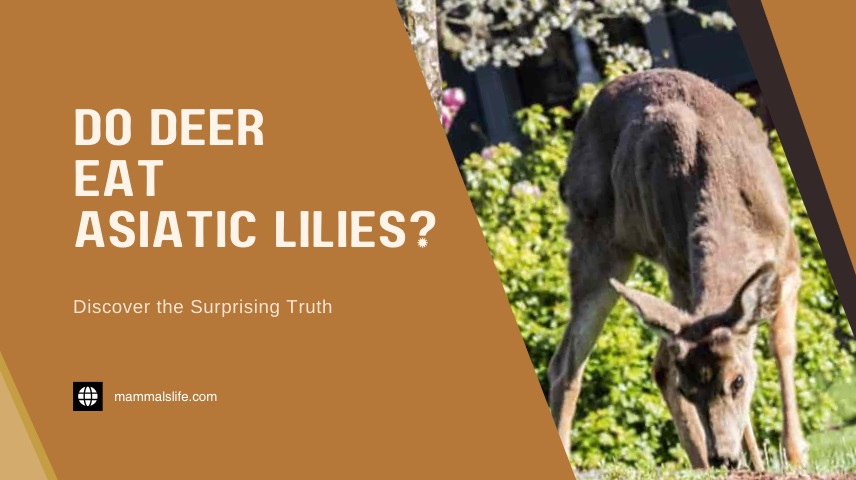Last Updated on February 22, 2025 by Mammals Life
Yes, deer eat arborvitae. These plants are often a preferred choice for deer during winter months.
Arborvitae, commonly known as Thuja, are evergreen trees and shrubs popular in landscaping. These plants provide dense foliage and are used for privacy screens and windbreaks. Unfortunately, their tender leaves and branches make them a favorite food source for deer, especially when other vegetation is scarce.
Homeowners often face the challenge of protecting their arborvitae from hungry deer, particularly in winter. Understanding deer feeding habits and implementing protective measures can help preserve these valuable plants. Options include using deer repellents, fencing, or choosing deer-resistant plant varieties. Proper care and preventive actions can ensure arborvitae remain healthy and attractive throughout the year.
Deer’s Dietary Preferences
Understanding a deer’s dietary preferences helps protect your garden. Deer are known for their diverse diet. They often munch on a variety of plants. But do they eat arborvitae? Let’s explore their tastes.
Common Plants Eaten
Deer have a wide range of favorite plants. Here are some common ones they eat:
- Hostas
- Roses
- Daylilies
- Impatiens
- Azaleas
Deer love these plants for their taste and nutrition. They often nibble on tender shoots and leaves.
Why Deer Choose Arborvitae
Arborvitae is a favorite for many deer. But why do they prefer it? Here are some reasons:
- Soft Foliage: Deer enjoy the soft, green leaves.
- Evergreen Nature: Arborvitae stays green all year.
- Easy Access: These plants are often in gardens and yards.
Deer find arborvitae easy to eat, especially in winter. The plant’s leaves remain green and accessible.
Avoid planting arborvitae if deer are common in your area. This can help protect your garden from damage.
Read More – Do Deer Eat Asiatic Lilies? Deer Interaction, Resistant Plants
Arborvitae Characteristics
Arborvitae, also known as Thuja, are popular evergreen trees. They are well-loved for their lush, green foliage and conical shape. These trees are commonly used in landscaping for privacy hedges and windbreaks. Their dense growth and year-round color make them a favorite choice among gardeners.
Types Of Arborvitae
There are several types of arborvitae to choose from. Here are the most common ones:
- American Arborvitae (Thuja occidentalis): This type is native to North America. It grows up to 40-60 feet tall.
- Giant Arborvitae (Thuja plicata): Also known as Western Redcedar. It can reach heights of 50-70 feet.
- Emerald Green Arborvitae: This variety is smaller, growing up to 12-15 feet. It is ideal for smaller gardens.
- Golden Arborvitae: Known for its golden-yellow foliage. It adds a splash of color to gardens.
Growth And Maintenance
Arborvitae trees are easy to grow and maintain. They thrive in full sun to partial shade. They prefer well-drained soil but can tolerate different soil types.
Water young trees regularly to establish strong roots. Once established, they are drought-tolerant. Prune them in early spring to maintain their shape. Use mulch around the base to retain moisture and suppress weeds.
Fertilize arborvitae trees once a year in early spring. Use a balanced, slow-release fertilizer. Protect them from deer, as they enjoy nibbling on the foliage.
| Arborvitae Type | Height | Special Features |
|---|---|---|
| American Arborvitae | 40-60 feet | Native to North America |
| Giant Arborvitae | 50-70 feet | Also known as Western Redcedar |
| Emerald Green Arborvitae | 12-15 feet | Ideal for smaller gardens |
| Golden Arborvitae | Varies | Golden-yellow foliage |
Read More – Do Deer Eat Mums? Signs, Behavioral Clues, Protecting Your Garden
Signs Of Deer Damage
Deer loves to munch on arborvitae, especially during winter. Identifying deer damage early can save your plants. Here are some signs to look for.
Visible Indicators
Deer leave clear signs on your arborvitae. Look for the following:
- Stripped Bark: Deer often strips bark from trees and bushes. This can kill the plant.
- Jagged Edges: Deer don’t have upper front teeth. They tear plants, leaving jagged edges.
- Footprints: Deer tracks are about 2-3 inches long. Their hooves leave clear imprints.
- Droppings: Deer droppings resemble large, dark brown raisins. You’ll find them near your plants.
Seasonal Patterns
Deer feeding habits change with the seasons. Knowing these patterns helps you protect your arborvitae:
| Season | Deer Feeding Behavior |
|---|---|
| Spring | Deer have plenty of food options. They may nibble on new growth. |
| Summer | Deer feed on various plants. They prefer lush, green foliage. |
| Fall | Food is scarce. Deer often targets arborvitae as a last resort. |
| Winter | Food is scarce. Deer often target arborvitae as a last resort. |
Protecting Arborvitae From Deer
Deer loves to munch on arborvitae. Protecting your arborvitae from deer is crucial. Here are some effective methods.
Physical Barriers
Physical barriers are the most effective way to keep deer away. They create a physical separation between deer and your plants.
- Fencing: A fence should be at least 8 feet high. Deer can jump high.
- Netting: Use netting around individual plants. This stops deer from nibbling.
- Tree Shelters: These are tubes that go around your arborvitae. They protect young trees from deer damage.
Repellents And Deterrents
Repellents and deterrents can also keep deer away. They make the plants less appealing to deer.
- Commercial Repellents: These sprays have a strong smell or taste. Deer don’t like them.
- Homemade Solutions: Mix egg, water, and soap. Spray it on your arborvitae. Deer dislike the smell.
- Motion-Activated Sprinklers: These devices spray water when they sense movement. Deer get scared and run away.
- Deer-Resistant Plants: Planting deer-resistant plants around arborvitae can help. Deer may avoid the entire area.
Using these methods can help protect your arborvitae from deer. Keep your plants safe and healthy.
Read More – Do Deer Eat Spirea? Deer-resistant Plant, Protecting Your Garden
Alternative Plant Choices
Deer loves munching on arborvitae, leaving gardeners frustrated. The good news is, there are many alternative plant choices that deer usually avoid. These alternatives can keep your garden beautiful and safe from hungry deer.
Deer-resistant Plants
Choosing deer-resistant plants can save your garden. Here are some great options:
- Lavender: Deer dislikes its strong scent.
- Marigolds: The bitter taste keeps deer away.
- Boxwood: Hardy and unappealing to deer.
- Yarrow: Deer finds its taste unpleasant.
- Bee Balm: Attracts bees but not deer.
Companion Planting Strategies
Companion planting can protect your garden from deer. Some plants can act as natural repellents when planted together. Here are some strategies:
- Plant herbs with strong scents like rosemary and thyme around your garden.
- Use thorny plants like barberry as a natural fence.
- Mix in plants that deer dislike, such as garlic and onions.
- Grow tall grasses around your garden to hide other plants.
- Combine flowers with strong scents and bitter tastes.
These companion planting strategies can help keep deer away from your beloved plants.
Frequently Asked Questions
Do Deer Eat Arborvitae Plants?
Yes, deer often eat arborvitae, especially in winter when other food sources are scarce.
How To Protect Arborvitae From Deer?
Use deer repellents, fencing, or plant deer-resistant species around arborvitae to deter them.
Why Do Deer Eat Arborvitae?
Deer eat arborvitae because they are a readily available food source, especially during harsh winters.
Can Arborvitae Recover From Deer Damage?
Yes, arborvitae can recover, but severe damage may stunt growth or cause permanent harm.
Which Arborvitae Are Deer-resistant?
‘Green Giant’ and ‘Spring Grove’ varieties are more deer-resistant compared to others.
What Are The Signs Of Deer Eating Arborvitae?
Look for stripped bark and missing foliage on the lower parts of the plant.
Conclusion
Deer do eat arborvitae, especially during winter. Protect your plants with fencing or repellents. Choose deer-resistant plants to minimize damage. Understanding deer behavior can help maintain your garden’s beauty. By taking these steps, you can enjoy a thriving landscape free from deer damage.











